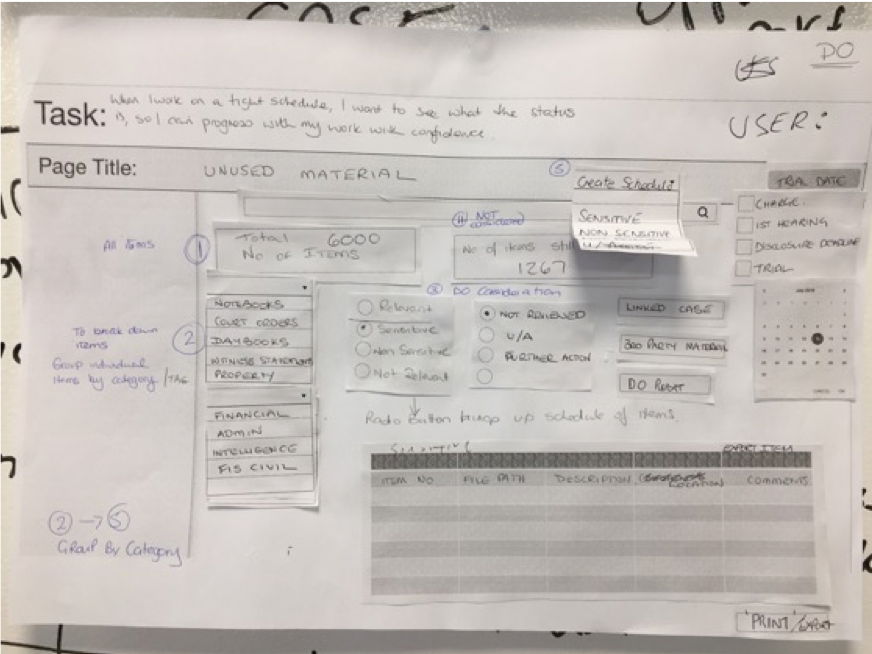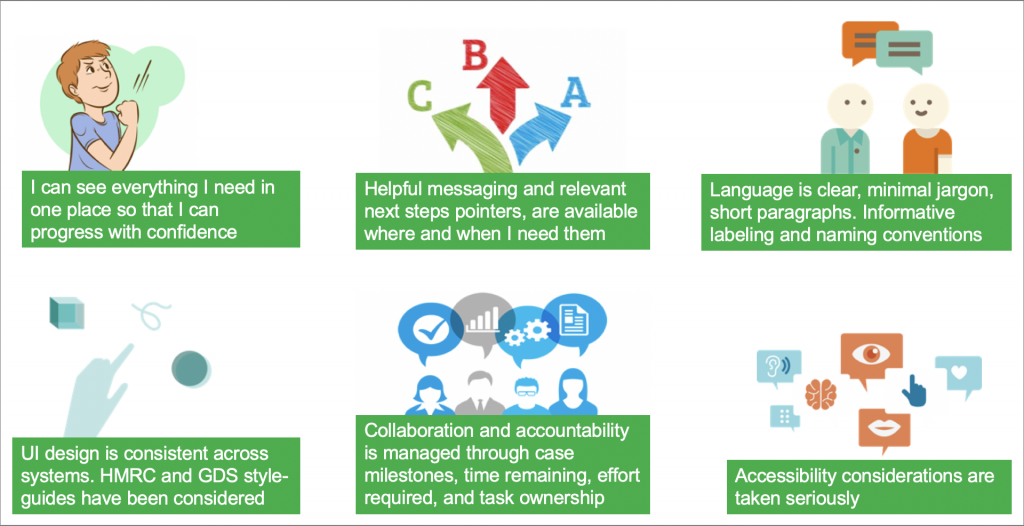Improving the way Fraud Investigation Officers work

Project background
HMRC are looking to improve the ways Fraud Investigation Officers can work more effectively and with greater confidence by improving communication, collaboration and sharing domain knowledge. Junior investigators fear of making crucial mistakes or even being sued, drives insecurity and a high staff turnover. This puts excessive burden on senior investigators to help with “trivial” matters.
My role
As a Lead Service Designer, I led a team of UX/UI designers, researcher and visual designer, working closely with an internal team of Business Architects and front-end developers. I ran a two-day co-design workshop which included persona mapping, journey mapping and wireframing.
Challenge
How might we improve collaboration and confidence by reducing the risk involved in case management activities, through a clear and intelligent case and document management process.
Research findings
Systems and Information
- Current system and processes are “archaic and overwhelming”
- Different systems and methods are used to gather information
- Processes are not designed around users tasks
- Unclear legal jargon creates confusion and wastes time
Timeline dependencies
- Case teams are pressured to meet HMRC trial win quota
- Manually scanning, uploading and categorising is labour-intensive and affects case preparation times
- Gaining access to restricted material requires filling out forms and meeting policy requirements which are time-consuming
Plan
After explaining the benefits of a Co-design workshop, over a requirements gathering workshop which the client’s team was used to, I initiated a two-day Co-design workshop with Case Workers, Investigators and internal stakeholders.
Initially, the business identified user types according to their job roles. However, by running an Empathy Mapping activity, we identified the main personas groups as Junior Investigator and Senior Investigator, as role seniority was a key factor in the process.

During the workshop participants created Experience Maps for work collaboration. This helped map the main pain-points and gaps that needed clarification in their work process.

We proceeded with co-design mapping, where participants in a group created their own Case Management interfaces to a given scenario, and then discussed their ideas. This was helpful for the design team to get a good idea of what was important for them.

Following the workshop, I led a brainstorming session with our team and we identified six key themes that were important in focusing the designs of the interface to improve the user experience.

We proceeded to map out the design concept which resulted in a first draft of the wireframes and a clickable prototype. These were used in remote usability testing with a selected group of users.

Outcome
The Beta version of the application was presented to the HMRC board and received well. Development and integration of the new system is currently taking place across several HMRC offices.
During our presentation to the board, the confidence issues we identified relating to junior investigators became clearer, and discussions over the need of an updated training manual and more support for junior investigators were discussed. This comes to show that with user-centred design, a requirement for a product can sometimes become an opportunity for organisational change.
